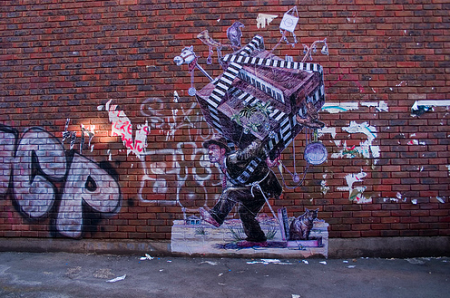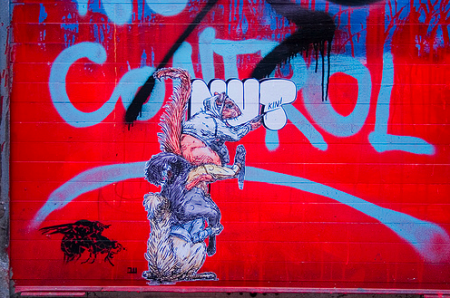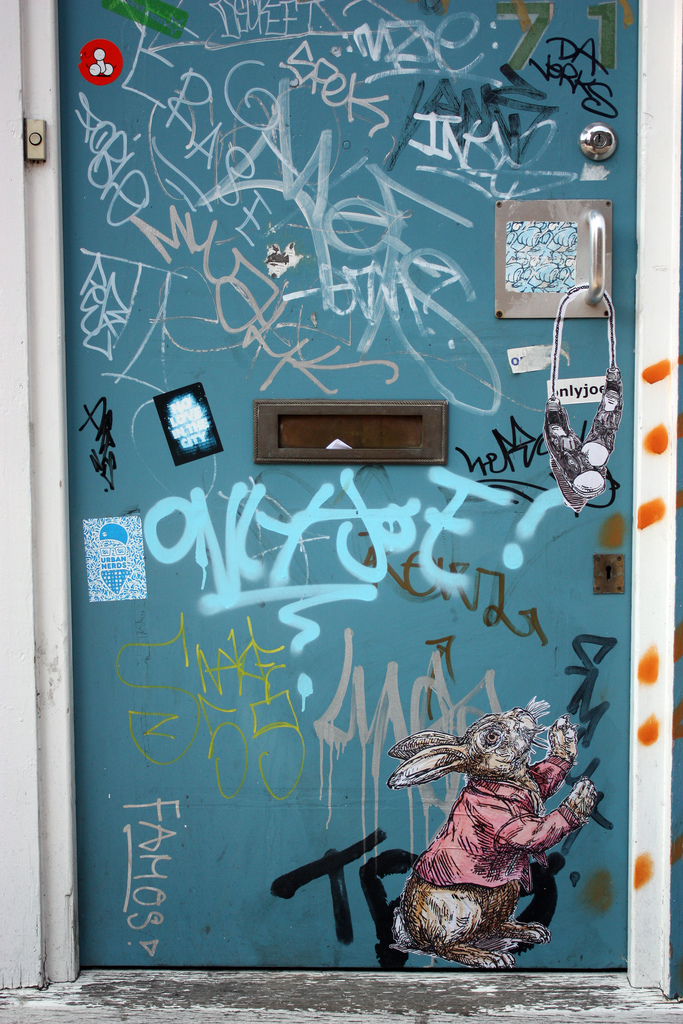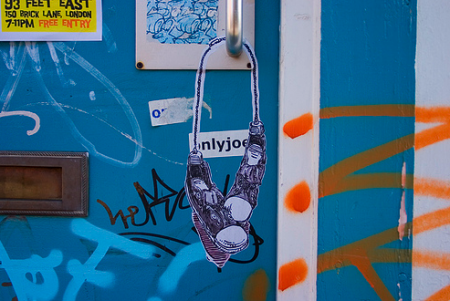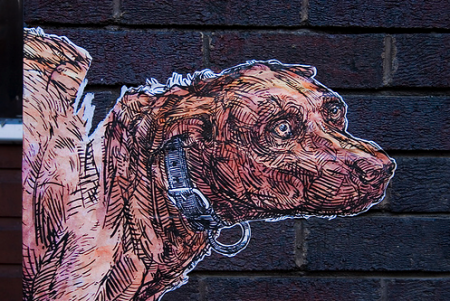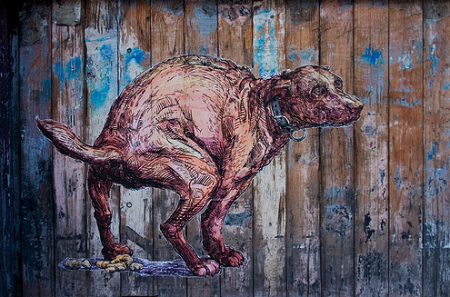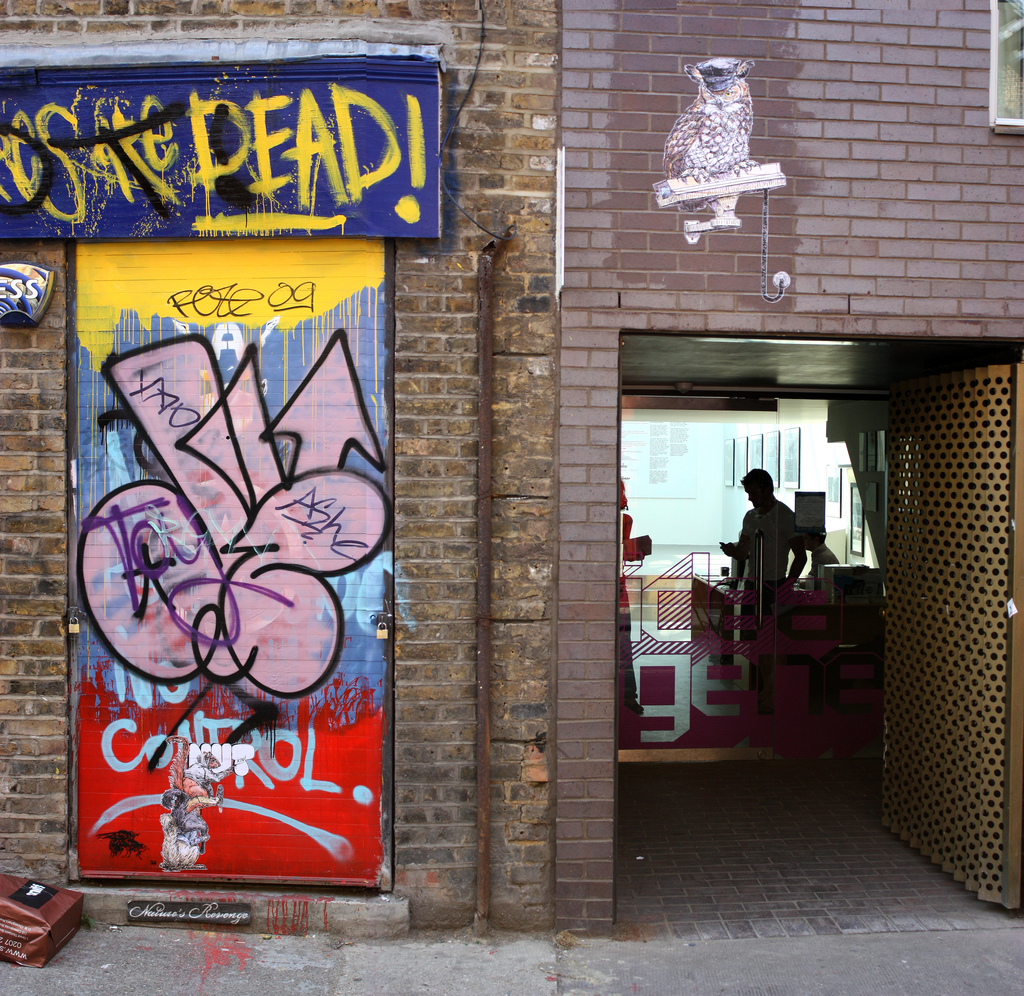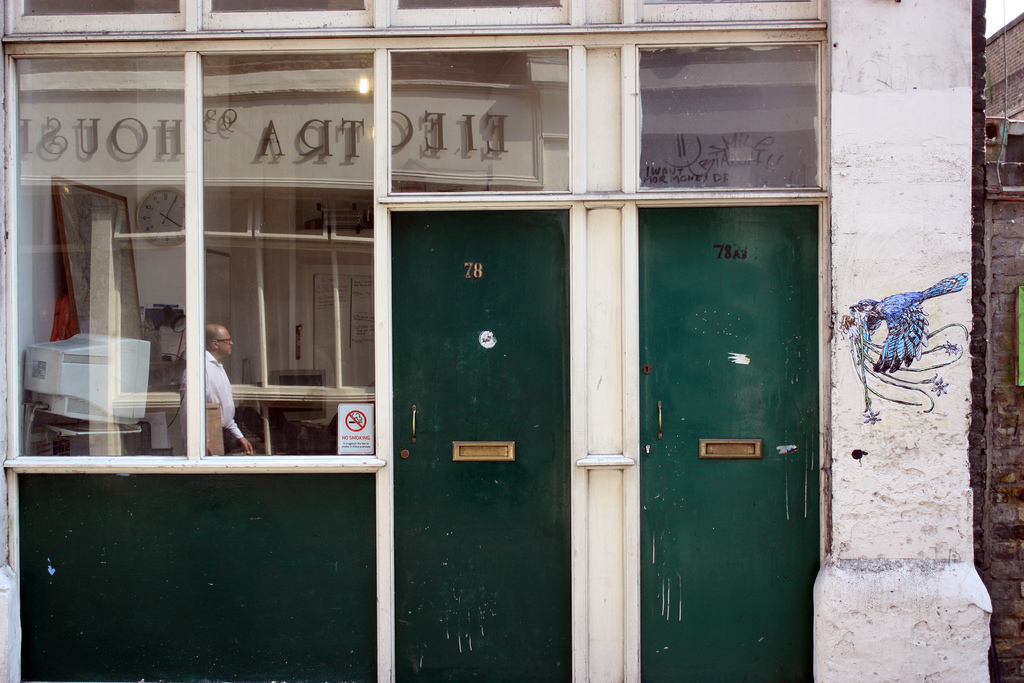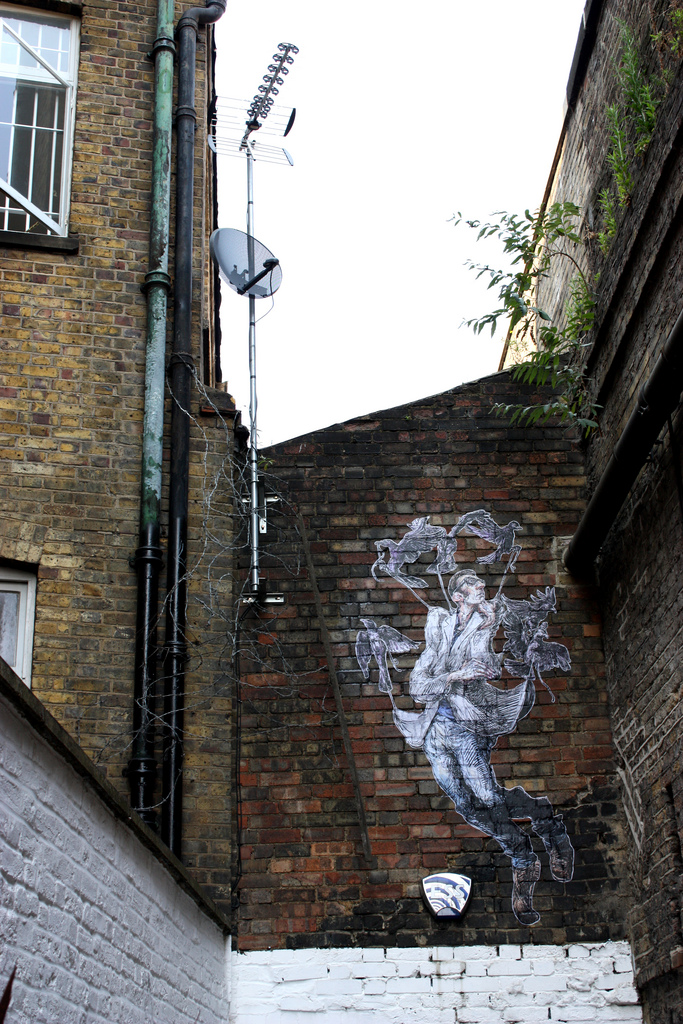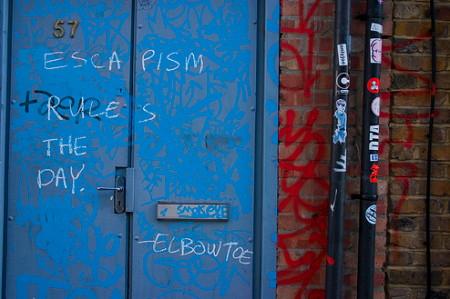Brian Adam Douglas aka Elbow-Toe has been busy since we last caught up with him at his Los Angeles solo show. Pasting up his hand-painted woodcut paper pieces and dropping some poetry in London’s hottest spots, he’s reminding our friends across the pond that there’s more to street art than just stencils and graffiti.
We’ll show you photos from the three person show he opened with Swoon (interviewed) and Matt Small (interviewed) last weekend later, but first, we bring you an interview with Elbow-Toe and some images from the streets of London.
Arrested Motion (AM): How did you put together the body of work for this show?
Brian Adam Douglas (BAD): My pieces are a series of collages though I think of them more as paper paintings rather than collages. It’s a similar process to collage in that its cut paper but I literally comb through the magazines looking for paper that’s a certain colour that I can cut a brushstroke from and use almost like paint. It’s a really time consuming process so I’ve been working on the pieces for the past 6 months 14-16 hours a day 7 days a week.
AM: Do you work from life or photos or your imagination?
BAD: If I could work from life that would be great, but some of those pieces take between 300 and 400 hours and I couldn’t ask people to sit there for me for that long. So I shoot photos – maybe 40 from all around the model – so I can go back and forth between pictures and understand how the forms are working from the different sides.
Then I make a very detailed drawing on the panel and just begin cutting paper to build the light sources and they get criss-crossed and pulled around the form. I try and keep it as loose as possible until I need to define the features and then I start with the head and work out from there. I put a tone on the panel so I have a middle tone to work back and forth from so it’s a very traditional way of working with a very different medium. I find I can improvise off the photos to make it look the way I want, so I try and make it as close as I can to having a live model.
AM: The results are stunning, but how do you deal with such a demanding process?
BAD: I guess I have a little OCD so it works for me! After Wooster’s Spring Street show I needed a break from what I’d been doing and I made a couple of collages to get myself interested in new work and something about the process really attracted me. I was looking at Romare Bearden, an American artist from the 1930s and 1940s who did a lot of collage work and I stole a lot of technical things he did that’s aided me like using distressed paper. The beginnings and end are glorious but the middle is just moving through. I work on one painting all the way through before starting another. The largest one in this show took about 6 weeks of working every day.
AM: And how do you select the subjects of your portraits?
They’re all people I know. Most of them close friends and I like to choose people that have interesting features and can say a lot with their eyes because I don’t want it to just be like a pretty portrait;I want it to be a persona that really exists in the piece.
AM: I love narrative and story telling in art. How are you working with narrative at the moment?
BAD: My wife is an actress, so I’ve seen a lot of theatre and I’m heading more towards more theatrical rather than cinematic scenarios. I almost think of the portraits like monologues to fully define the individual in the moment. Most of the hand gestures are sign language; I got a book of American sign language at one point and thought it was a great way of sneaking text in in a subversive way though I’m toning down the gestures a little so its not too forced or in your face as its my own little thing.
I want to start telling more stories and having more figures in one space and am working towards that for my next show. I don’t want the gallery pieces to be too obvious and hope that the work will start to speak to you if spend some time with them so its like a slow read.
AM: And are Greek Myths still featuring in your work?
BAD: Yes – I’ve brought some Oedipus and Icarus pieces I’m hoping to put up while I’m over here. In terms of gallery stuff, if myth comes into it, it’s in a much more subverted way but I do enjoy them as ideas. Even if you don’t know the particular myth, the images are often so packed that it will give you something of interest. I’ve been reading some books of Indian myths recently and the stuff from those seems so much more fantastical. I need to figure out if there’s anything I want to take from those.
AM: Who’s influencing your work at the moment?
BAD: Well I’m always trying bring in art history to these paintings. I love Lucien Freud, Frank Auerbach, Francis Bacon. One of the huge influences on this series was a Hans Holbein painting in the National Gallery in London of this woman holding this scroll. It’s just a gem of a painting and there’s a certain quality that I wanted to capture – a real presence of the person in the painting and a personality coming out. Rembrandt is also a huge influence on my work, Alice Neil – an American painter who did these great portraits in which nobody was beautiful, but everyone was ugly. Also Ivan Albright is a Chicago painter who’s really interesting and Chaim Soutine was huge particularly huge for my distortion work.
AM: Are you familiar with Matt Small and Swoon’s work?
BAD: Yes – I love it and it’s a beautiful show – there’s a lot of colour in that room which feels really good for this time of year. I had the pleasure of exhibiting with Matt last time I was here and was just blown away by his handling of the material. I’d been doing street art for about a year before I saw Swoon’s stuff. A friend of mine showed me of a photo of her work and I thought it was really really cool and made me realize I could do serious art on the street. Her street work really motivates me to make more and better street work of my own.
AM: We hear you used to be programmer and wondered if you use computers in your work?
BAD: Not other than looking at photos of the models. I’ve thought of doing some interactive stuff as there’s some software where you can feed video and infrared into it and could potentially make interactive pieces on the street. I’d love to get into that, but its so time consuming and I can’t find any programmers so maybe down the road.
Images via of Elbow-Toe and invisiblemadevisible.
Discuss Elbow-Toe here.




